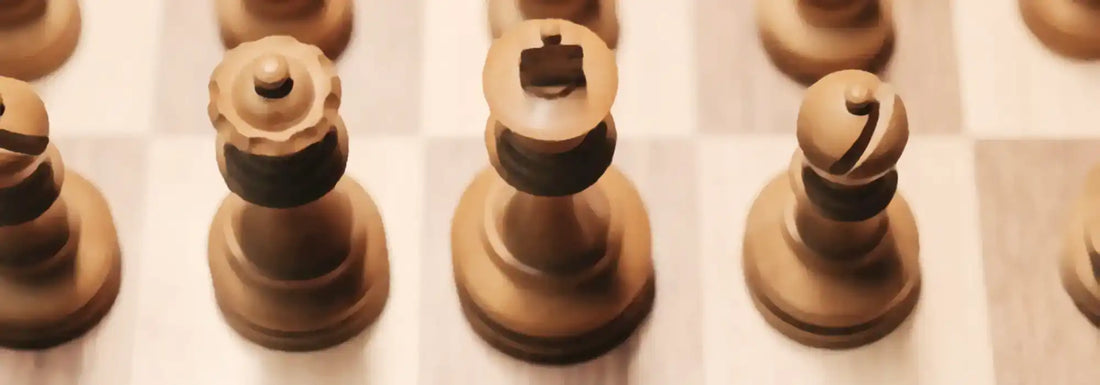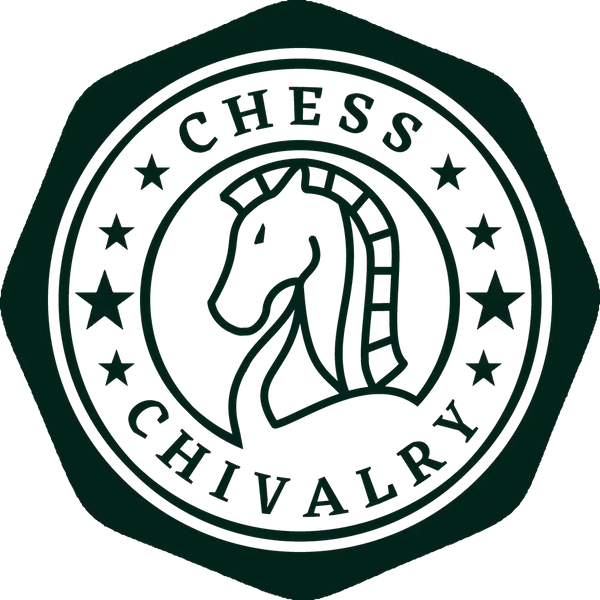
Chess & Strategy: The Underrated King
Share
The heart of the game of chess is the king, a piece that also embodies the actual goal of the game. Capturing the king is the first commandment. But although he is the main target of attack and thus always at risk, he alone does not have the means to defend himself. While most pieces can move several squares, the king is limited to a single square in any direction. This makes it seem very weak compared to a bishop, a knight or even the queen. But this apparent disadvantage can be deceptive, because a king is still stronger than a pawn in comparison and yet is always held back by most players.
In the following, I would like to look at the different phases of the game from the king's point of view and give you tips and inspiration for your game.
The Opening
In the early phase of the game, the king's activity is still very limited. He is surrounded by allied chess pieces, cannot move and in general the development of the bishops and knights is of higher importance. Nevertheless, one move can be decisive for the further course of the game: castling. It brings the king to safety and the rook into play. For this reason, castling should not be renounced. Which side you castle to usually depends on the choice of opening, but also on the reaction of the opponent and the general possibilities that the course of the game offers you in the course of the initial phase.

The king castles in the opening of the Spanish game
Another reason to move the king in the opening phase is to prevent a later check bid. However, such a move should only be made when all other chess pieces are developed and one's tactics do not provide for a quick attack. A later check bid can usually be prevented by moving the king out of the attacking diagonal of a bishop or further into queenside cover. In the former case, it is necessary to assess the strength and tactical motives of the opponent's bishops to make such a move worthwhile. In the second case, it is necessary to assess how vulnerable the king is a little further in the centre and whether the a2-pawn needs protection.
Apart from the possible moves listed above, there are few reasons to move the king elsewhere without falling behind.
The Middlegame
The first commandment in the middlegame is to keep the king safe. The reason for this is simple. Because of the many development possibilities in the game, the risk to the king is in most cases much higher than its attacking potential. However, in rare cases it makes sense to include the king in the attack. Such a manoeuvre is called a "King Walk" or "King March", although the term only refers to an aggressive king in the middlegame, not in the endgame. But even though the inclusion of the king is very rare and strongly discouraged, it was none other than Wilhelm Steinitz who said that "The king is a fighting piece".

Victory for White by attacking with the king in the middlegame
When or under what circumstances the king can be included in the attack cannot be determined by a rule of thumb. It can be regarded more as one of the king disciplines of the middlegame, which gains in potential with the tactical abilities of the player. Probably the most famous example of a "King Walk" was played by Nigel Short and Jan Timman in 1991. Short launched an attack with his king along the kingside towards the end of the middlegame, thus helping his queen to checkmate his opponent.

The king moves into the opponent's home rank under zugzwang.
However, it is also possible that the king is forced to move due to zugzwang. This is not the same as deliberately using the king as an attacker, but it can sometimes trigger imposing game manoeuvres. The most famous game with a king under zugzwang is probably Edward Lasker vs. George Alan Thomas from 1912. Lasker, as the white player, offered check to the black king seven times in a row, allowing it to pass through to the bottom rank before being checkmated by the white king's withdrawal from the white rook. The game went down in chess history as the "Immortal King Walk".
The comparison of the two games clearly shows that a deliberate use of the king in the middlegame can bring about victory. But if this is not carefully planned or the king is not sufficiently protected when it is used, the opposite can quickly happen and the king is chased across the chessboard.
The Endgame
In the final phase of the game, the king takes a central role in the attack. Since the chessboard is now mostly occupied by pawns and the light pieces are only sporadically left, the danger of checkmate is low. The goal in the endgame shifts from defending the king to supporting the pawns in the attack so that they become queens. The player who has maintained his pawn structure well and uses his king aggressively and purposefully has the greatest chance of victory. Nevertheless, there are a few peculiarities that should be taken into account when moving the king in the endgame.
The Square
If a pawn breaks through and threatens to run all the way to your base row, you can quickly check whether you can intercept it with the square rule.

The king can move into the square and intercept the pawn if it is not hindered on its way.
Internalising this rule is important because in endgames there is usually time pressure and a manual calculation would take too long.
Endgame with King and Pawn
When the endgame is coming to an end and there are only two kings and a pawn left on the field, caution is advised.

Black's move, but the white king defends his pawn. The black king tries to displace it and capture the pawn.
This classic position is problematic for White. The player must be careful to always defend his pawn on the front rows. If he does not do this, the black king has the opportunity to approach the pawn. In this example, the black king can move to the squares d6 or f6. White would then move his king to f5 or d5, protecting the passage of his pawn. If the black king approaches, the white pawn can move up and displace it.
Two important Rules for the Endgame with King and Pawn:
- The pawn must never be on the same level as its king. Then Black would have the possibility of a draw.
- The white king never moves in front of his pawn unless the black king has moved to the pawn's rank first. Here, too, a draw would be the result.
Endgames with Queen, Rook, Bishop and Knight
If not all light pieces or heavy pieces on the chessboard have been captured, the king can also checkmate the opponent's king in combination with them. I have described these so-called mate patterns in detail in an article about chess traps and chess blunders, feel free to have a look at it.
Conclusion
For many players, the king is a chess piece that should be kept safe and only moved under duress until the end of the game. But this does not do justice to the king. Of course, it must be protected at all costs. But an overly passive attitude also leads to a loss of attacking power. On a less contested square, the king can make the difference and decide between victory and defeat. Especially in the endgame, not having an attacking king is more of a risk than a security. Therefore, it is important to study the tactical possibilities of the king and to internalise a more aggressive game behaviour, especially in the endgame.
I hope that I could encourage you a little to bring your king actively into the game. If you have any questions, feel free to contact me via my contact form.
If you also play chess on the chessboard, have a look at my range of Staunton chess pieces and chessboards. I stock a wide range of handmade products in tournament format.
I wish you a lot of fun playing the game, much success and rapid progress in your learning.
See you soon.
Stefan
